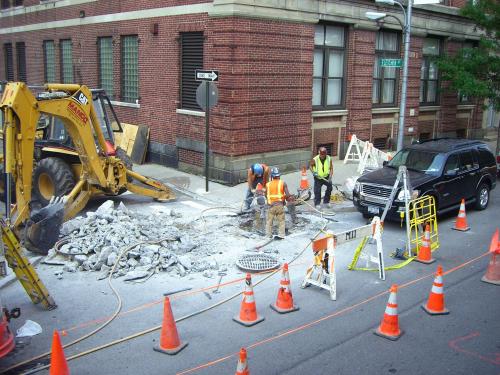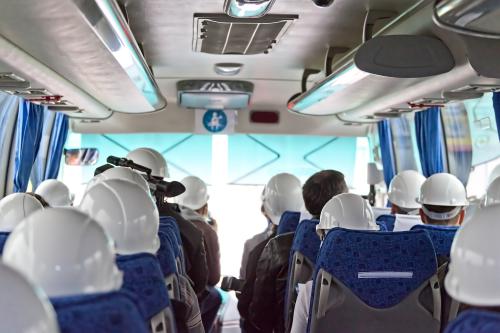The last month has seen one of the biggest auto strikes in decades, with almost 50,000 United Automobile Workers walking off the job at 50 General Motors facilities across the country. While the strike has driven negotiations over better pay, benefits, and job security, it’s also drawn attention to what unions can do to help workers in manufacturing and other industries who are falling behind economically. Not all people or places are accessing better jobs and pay despite record low unemployment, and unions have been shown to boost wages and improve economic equity.
So not only does it matter whom unions represent, but also where that representation is concentrated.
Unions have traditionally helped workers navigate challenging economic headwinds through collective bargaining, training efforts, and other workforce development activities, but their regional role is not always well measured or understood. Without knowing where unions are engaged regionally, it’s hard to grasp just how much of a role they can play in local wage negotiations and other workforce collaborations, including apprenticeships and on-the-job training. And at a time of growing regional inequality and divergence, it’s more important than ever for regional leaders to develop new strategies and forge new partnerships that drive greater economic opportunity.
Yet in most regions, the reach of unions continues to shrink. Data from the U.S. Bureau of Labor Statistics show a widespread national decline in union membership over the last few decades, from a high of 20.1% in 1983 to a low of 10.5% in 2018. Private-sector workers have seen the biggest drop in membership, sinking to just 6.4% in 2018, likely due to a combination of factors, including a shift to nonunionized service industries, changing labor laws, and employer resistance. Meanwhile, public-sector workers have maintained higher levels of union membership, but they too have seen a drop, from 36.7% in 1983 to 33.9% in 2018.

Still, unions maintain a more extensive reach in certain industries and regions. Thanks to detailed data organized by Barry Hirsch and David Macpherson, we can see that 42 of the country’s 100 largest metro areas have union membership rates above the national average (10.5%). There is a wide range of unionization membership rates across different metro areas, and several likely factors at play to help explain this variation.

- A large presence of government activities can contribute to higher levels of union membership. This includes metro areas that function as state capitals, such as Albany, N.Y. (27.2% membership rate), Hartford, Conn. (16.0%), and Harrisburg, Pa. (11.4%), as well as metro areas that contain extensive military operations, such as Colorado Springs, Colo. (41.9%).
- A region’s specific industrial makeup can influence union membership too. Manufacturing workers, particularly in sectors such as auto and aerospace, are still unionized at higher rates than other private-sector workers. Hence, metro areas such as Minneapolis (15.8%), Detroit (15.2%), and others in the Rust Belt tend to stand out.
- Organizing history and state laws also have a big effect. Right-to-work laws, for instance, can lead to lower levels of membership by not requiring workers to have union representation; 27 states have such laws, many in the South and Midwest. Metro areas with the lowest union membership rates include Houston (4.0%), Charlotte, N.C. (4.5%), and Tulsa, Okla. (5.0%), reflecting broader trends throughout the Sunbelt. Many other industrial and geographic factors, specific to particular states and localities, can also influence membership; New York boasts a long history of labor movements and remains one of the most heavily unionized locations in the nation. The same is true in states such as California, Washington, and even Hawaii.
Of course, these statistics only scratch the surface of the complex role and history unions have in different regions, in legal terms and otherwise. The story is complicated. On the one hand, unions have helped support higher and more predictable wages for some workers over time, including a 10-20% wage difference between unionized and nonunionized workers. Yet other studies have found a negative effect on employment for certain workers and a rise in business costs. The current strike has already cost GM an estimated $2 billion from shuttered factories, for instance, in addition to lost take-home pay for workers.
Ultimately, businesses and employers have a lot to say about where growth happens, and whether it translates into more opportunity for more people and places. But the GM-UAW strike has come at a time when many regions are coping with greater inequality, and has underscored the growing interest in what unions can do about it. We cannot lose sight of where unions stand in regional conversations and actions, particularly given their potential to be even more engaged in regional workforce development efforts. Unions continue to represent a force for change—in support of better wages, benefits, and training—and we need to more clearly recognize how they are (or are not) addressing today’s difficult labor challenges at both a national and regional level.






Commentary
Recognizing labor’s local role amid national strikes: A metro-level look at union membership
October 25, 2019